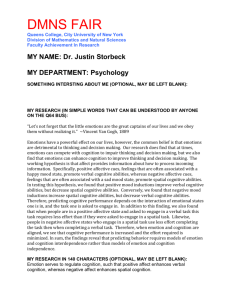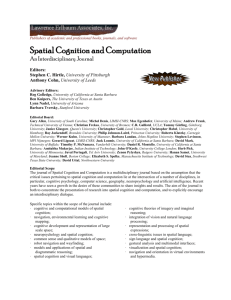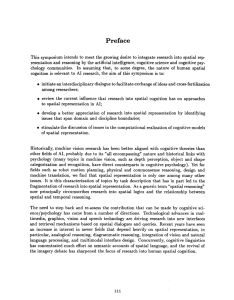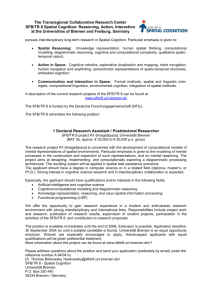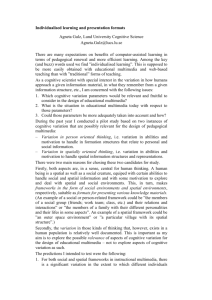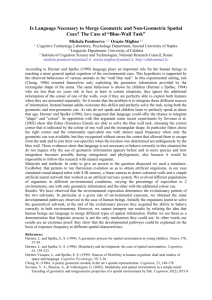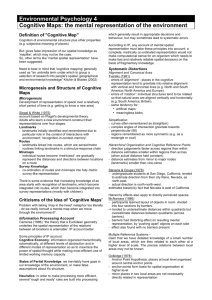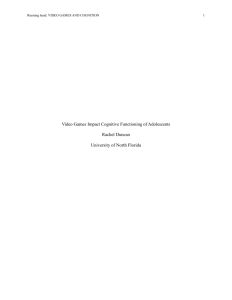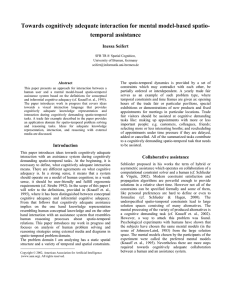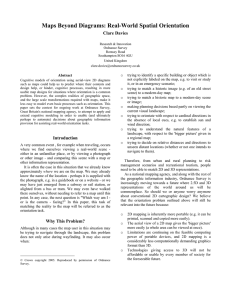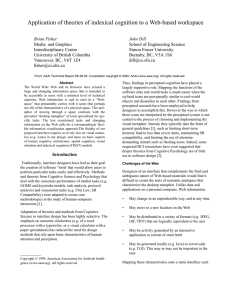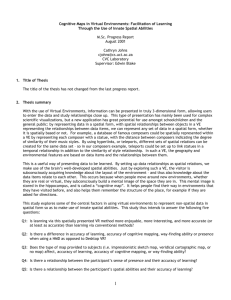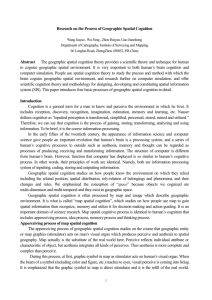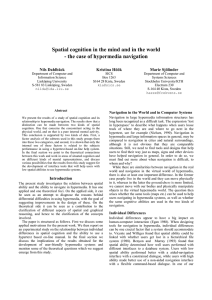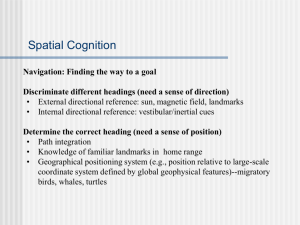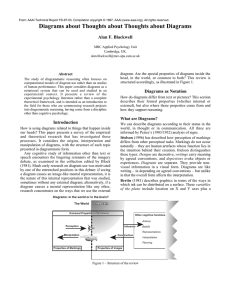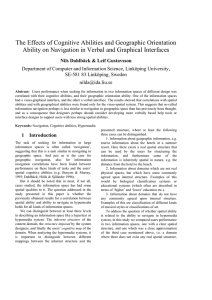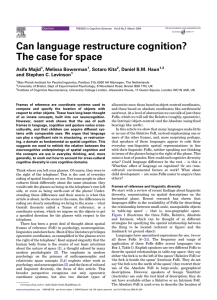Environmental cognition Wed. 9/19, Fri. 9/21
advertisement
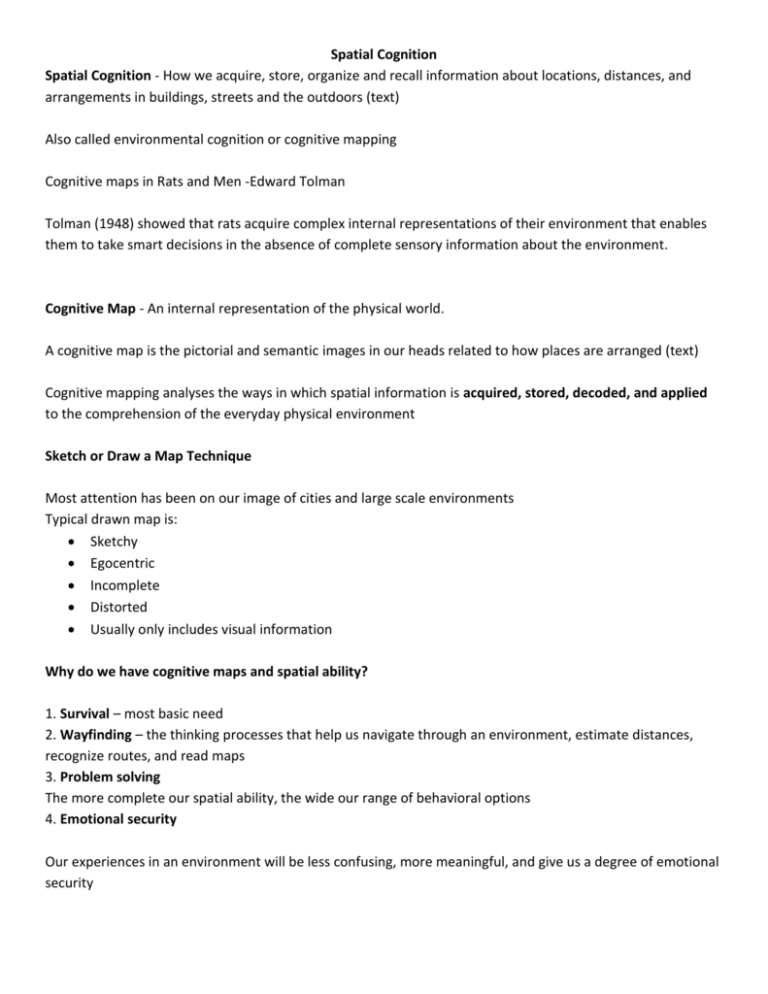
Spatial Cognition Spatial Cognition - How we acquire, store, organize and recall information about locations, distances, and arrangements in buildings, streets and the outdoors (text) Also called environmental cognition or cognitive mapping Cognitive maps in Rats and Men -Edward Tolman Tolman (1948) showed that rats acquire complex internal representations of their environment that enables them to take smart decisions in the absence of complete sensory information about the environment. Cognitive Map - An internal representation of the physical world. A cognitive map is the pictorial and semantic images in our heads related to how places are arranged (text) Cognitive mapping analyses the ways in which spatial information is acquired, stored, decoded, and applied to the comprehension of the everyday physical environment Sketch or Draw a Map Technique Most attention has been on our image of cities and large scale environments Typical drawn map is: Sketchy Egocentric Incomplete Distorted Usually only includes visual information Why do we have cognitive maps and spatial ability? 1. Survival – most basic need 2. Wayfinding – the thinking processes that help us navigate through an environment, estimate distances, recognize routes, and read maps 3. Problem solving The more complete our spatial ability, the wide our range of behavioral options 4. Emotional security Our experiences in an environment will be less confusing, more meaningful, and give us a degree of emotional security How to study spatial ability? Sketch or draw map techniques Lynch (1960) asked residents in 3 cities (Boston, LA, and Jersey City) to draw a quick map of their city as if they were making a rapid description of it to a stranger. Legibility refers to the degree to which a setting is easily learned, organized, recognized or remembered. Lynch- 5 Major elements Paths - movement channels (e.g., streets, railroads, walkways, freeways) Edges - linear elements not used as path Coasts lines, rivers, barriers, walls, state lines (Red river) Districts - areas identified by a common character (South Fargo, the dorm area, Greek town) Nodes - focal points where major paths meets or end Landmarks - distinctive features that people use as a points of reference Composite Maps - Lynch combined resident maps with responses of trained observers to make composite maps Limitations and Problems Drawing for a stranger may not represent your real ability or image May reflect drawing ability Too much emphasis on visual aspects Overestimate the size of familiar or liked areas Gouldian or Preference Maps Gould and White (1974) used a preference or knowledge about particular areas. Asked to rank order where they would like to live and other questions Recognition Tasks Milgram (1977) conducted studies on the ability to recognize a place you have seen before as a method to look at urban spatial ability (Recognition (R) = f (C x D) Centrality to population flow Architectural and/or social Distinctiveness Distance estimates Multidimensional scaling Verbal descriptions Computer simulations or virtual environments Biases in Spatial Cognition Familiarity bias – we overestimate the size and distance of familiar or like areas Euclidean bias- we think of the world as more Euclidean or grid-like than it is Superordinate scale bias – We tend to rely on superordinate grouping or categories Improving Spatial Cognition Degree of visual access – especially to landmarks Differentiation- the degree to which parts of the environment look the same or different Color coding paths, walls and floors Clearer Signage – very important You-are-here maps -may increases legibility o Structure matching – map reflects the layout and appearance of the setting o Orientation – Map aligned the same as setting Forward-up equivalence (top of map is what is ahead)



